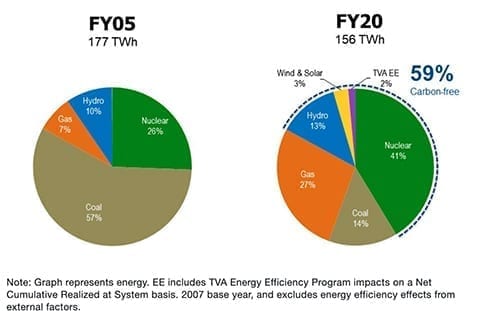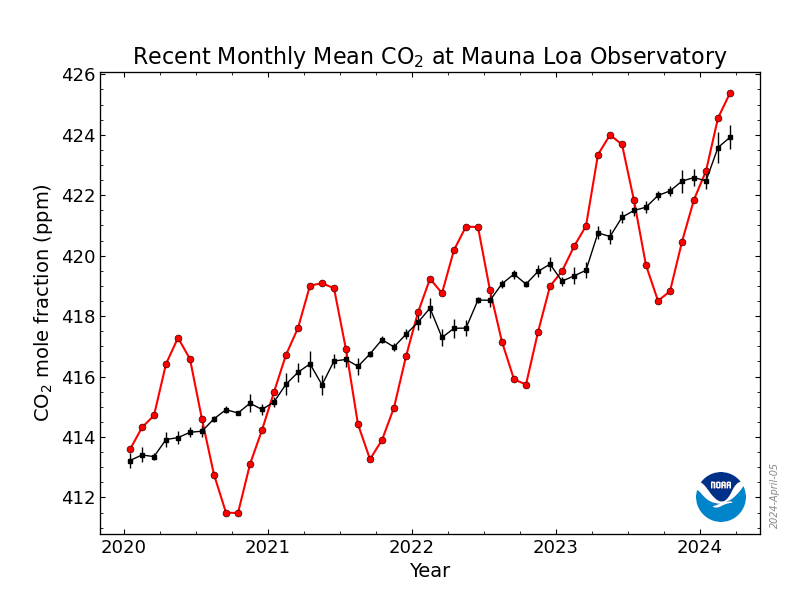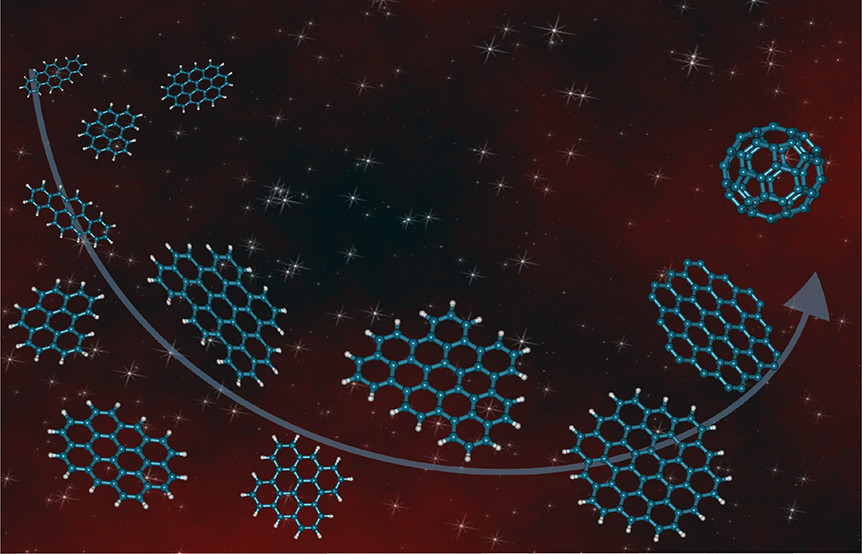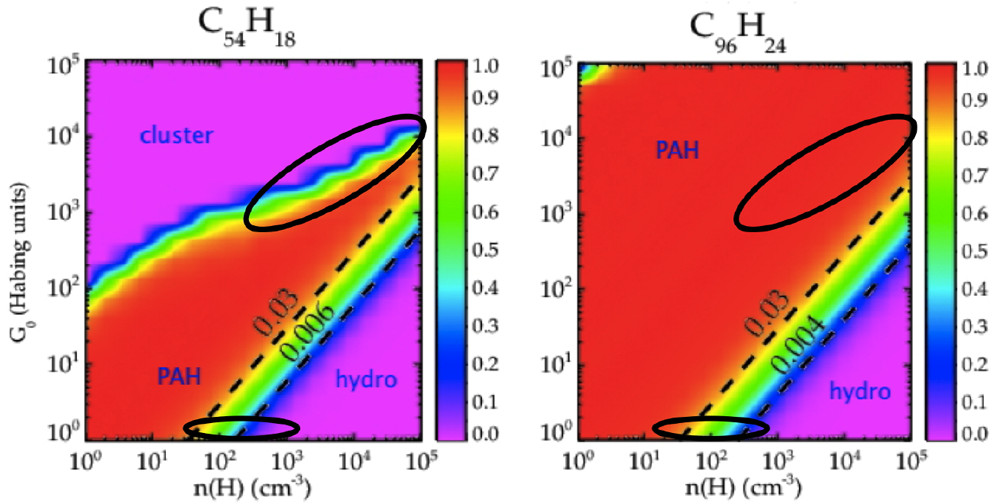NNadir
NNadir's JournalKatherine Jones, Lady Ranelagh, an incomparable intellectual who fell through the cracks of history
This book review, from Nature is probably open sourced:
An incomparable intellectual who fell through the cracks of history
Katherine Jones, Lady Ranelagh, worked at the heart of seventeenth-century scientific debates — in the shadow of her brother, Robert Boyle.
Excerpts:
Now, Michelle DiMeo has produced a portrait of another influential female thinker who has been hiding in plain sight — as a footnote in the story of her more famous brother, chemist and Royal Society co-founder Robert Boyle. DiMeo reveals Katherine Jones, Lady Ranelagh, as central to political, religious, philosophical and medical discussions, yet destined to be forgotten, because she obeyed the convention that women should not put their thoughts into print. DiMeo, a librarian at the Science History Institute in Philadelphia, Pennsylvania, has used her archival skills to trawl the papers of Ranelagh’s mostly male contemporaries to uncover her role as a public intellectual...
...Married off to Arthur Jones (later Viscount Ranelagh), Katherine had four children by the time she was 25. In 1642, she fled an uprising of Catholic rebels and settled in London with her children. She lived apart from her husband — a boor and gambler – but kept her title.
In London, she became one of the most active members of the circle of correspondents cultivated by the polymath Samuel Hartlib. The group shared, copied and discussed letters and manuscripts; Ranelagh hosted meetings in her home. Members admired her contributions on politics, religion and natural philosophy, dubbing her “the Incomparable” and citing her frequently. The interests of the circle evolved, converging on new, ‘useful’ knowledge revealed through experimental science, especially chemistry. One letter mentions Ranelagh as an early user of optical instruments such as a telescope.
Ranelagh introduced her teenage brother Robert to the circle after he returned from a tour of Europe in 1644; she became his spiritual and intellectual mentor. As he focused on chemistry, she equipped a laboratory at his Dorset home. He thanked her: “the delights I taste in it, make me fancy my laboratory a kind of Elysium” (spelling modernized). In 1668, he moved permanently into Ranelagh’s home in London’s fashionable Pall Mall...
TVA, Eyeing Coal Phaseout by 2035, Will Rely on Nuclear
TVA, Eyeing Coal Phaseout by 2035, Will Rely on NuclearDuring a fireside chat with Sen. Joe Manchin (D-W.Va) on April 28 hosted by the nonprofit international think tank the Atlantic Council—an event focused on the future of low carbon generation in the Appalachian region—Lyash noted the self-funded U.S. corporate agency has already retired 60% of its coal generation. “Our coal units will continue to retire over the next 15 years because they’ve reached the end of life,” he said.
However, TVA’s 2035 coal phaseout is still an “aspirational target” that will depend on environmental impact studies, and ultimately, a board-approved recommendation by the company, spokesperson Jim Hopson told POWER. While TVA does not intend to invest in its coal plants to extend their lifetimes and it “knows the path that it generally wants to take,” environmental impact statements “sometimes can take years to fully prepare and to complete all the necessary studies, so it is unlikely that the board will receive a recommendation for all the plants simultaneously.” he explained. “It’s possible, but more than likely, coal will be phased [out] over a period of a few years.”
The declaration is still a noteworthy development for TVA, which federal legislation created in 1933. As the nation’s largest public power supplier today, the entity has a footprint that serves 10 million people, including in most of Tennessee, northern Alabama, northeastern Mississippi, and southwestern Kentucky and portions of northern Georgia, western North Carolina, and southwestern Virginia...
...Coal Carried TVA for Decades
Last week, Lyash highlighted the TVA’s original mission to spur economic development in the Tennessee Valley and Appalachia, but he noted the entity is also committed to environmental stewardship. Both aspects have driven a significant change in its power generating portfolio (Figure 1), he said.

1. TVA’s changing power portfolio. Source: TVA
While TVA began its coal-fired construction program in the 1940s, the majority of its coal units were placed in service between 1951 and 1973. Just 10 years ago, TVA produced 74,583 GWh—or about 52% of its total generation—from 53 active units at 11 coal plants. Increasingly stringent regulatory requirements over the past decade, along with environmental agreements with several states and environmental groups, forced the company to retire 18 coal units by 2017...
The fantasy that "coal is dead" is very prominent in the United States because of the popularity of replacing it with "transitional" natural gas. In reality, on the planet as a whole, irrespective of the fantasies of the US bourgeoisie in the provinces, coal has been the fastest growing source of energy on the planet as a whole in the 21st century.
The US "coal is dead" fantasy is driven by the willingness to destroy the ground water and much of the surface water of the entire continent by fracking, leaving permanent holes that will be oozing "God knows what" pollutants into the environment of all future generations.
No matter what one hears, natural gas is not clean; it is not sustainable, nor is it transitional. The use, in terms of energy, not the hollow lie of peak capacity, which may be available for a few minutes a day, of dangerous natural gas is rising far faster than is so called "renewable energy," the latter of which would collapse in a New York minute without access to dangerous natural gas.
Unlike all other coal phase outs in the US, by replacing coal with reliable 24/7 nuclear energy - which has the highest capacity utilization of any form of energy on the planet - the TVA is being sensible, not that humanity is being sensible.
Many people think so called "renewable energy" is driving coal phase outs. One hears this garbage thinking all the time. This belief is a form of ignorance, inattention, delusion, etc. Those steel posts in all those wind turbines we're constructing in our effort to convert all remaining wilderness into industrial parks are made using coke, which is coal heated to high temperatures using heat provided by the combustion of coal. Pretty much every wind turbine now operating will be landfill in about 20 to 25 years.
Modern nuclear plants are designed to operate for 60 to 80 years.
I trust you're safe and well.
TVA, Kairos Partner to Deploy Molten Salt Nuclear Reactor Demonstration
This looks like Per Peterson's design:
As part of their agreement, TVA will provide engineering, operations, and licensing support to help California-based Kairos Power deploy its “low-power” demonstration reactor. According to Kairos, Hermes is a 50-MWth test reactor that will integrate the Kairos Power Fluoride Salt-Cooled High-Temperature Reactor (KP-FHR) as part of a cost- and risk-reduction–focused development pathway that ultimately envisions commercial deployment of a 140-MWe “KP-X” plant.
“Kairos Power’s singular objective for deploying the Hermes Reactor is to demonstrate the capability to deliver an advanced reactor at the costs necessary to make nuclear power the most affordable source of dispatchable electricity in the United States,” it said on Thursday.
The KP-FHR concept, which bagged a $303 million federal award under the Department of Energy’s (DOE’s) Advanced Reactor Demonstration Program (ARDP) risk reduction pathway last December, essentially uses molten fluoride salt as a low-pressure coolant (rather than water, which is used in conventional nuclear reactors). The design also uses fully ceramic tri-structural ISOtropic (TRISO) particle fuel in pebble form, and a high-temperature superheated steam cycle to “convert heat from fission into electricity and to complement renewable energy sources,” the company says...
Molten Salt Nuclear Reactor Demonstration
I'm not a TRISO kind of guy, but any reactor capable of high temperatures is fine with me.
We will need high temperature nuclear reactors if we're even going to have a poor shot at addressing climate change. Without nuclear reactors we have no chance of addressing climate change.
Data from Qatar: Pfizer COVID vaccine protects against worrying coronavirus variants
This is a news item from Nature. I don't have much time today, as my wife and I will be visiting my son to celebrate mother's day, so I won't access or excerpt anything other than the news item, which should be open sourced.
Link to the news item: Pfizer COVID vaccine protects against worrying coronavirus variants (Ewen Callaway Nature May 6, 2021) Data from Qatar provide strongest evidence yet that COVID-19 vaccines can stop strains thought to pose a threat to immunization efforts.
Excerpt:
Amid this storm, researchers in Qatar have found some of the strongest evidence yet that current vaccines can quell variants such as B.1.351. Clinical trials in South Africa — where B.1.351 was first identified — had suggested that vaccines would take a hit against such variants. But this study offers a fuller picture of what countries battling such variants can expect.
People in Qatar who received two doses of the Pfizer–BioNTech vaccine were 75% less likely to develop a case of COVID-19 caused by B.1.351 than were unvaccinated people, and had near-total protection from severe disease caused by that strain.
The findings — published on 5 May in The New England Journal of Medicine1 — suggest that current RNA vaccines are a potent weapon against the most worrisome immune-evading variants...
Researchers in South Africa identified B.1.351 in late 2020, and it’s now the predominant strain there. Laboratory studies show that the variant harbours mutations that blunt the effects of virus-blocking antibodies, and trials suggest that some COVID-19 vaccines are significantly less effective against the strain than against others.
Early lab research suggested that RNA vaccines, including the Pfizer–BioNTech jab, would be weakened by B.1.351, but probably not fully compromised. In April, the companies announced that a small trial in South Africa had found the vaccine to be fully effective against B.1.351, but the study of 800 people recorded a total of just 6 infections caused by B.1.351 in the placebo group, so efficacy might have been much lower.
First evidence that COVID vaccines protect people against new variants
Abu-Raddad’s team analysed tens of thousands of COVID-19 cases that occurred between the start of Qatar’s vaccination campaign in late December and the end of March. Genome sequencing showed that B.1.1.7 and B.1.351 were the predominant coronavirus lineages during this period and, from mid-February, each accounted for about half of the country’s cases...
Good news...
Mr. Bojangles.
I have a number of colleagues born in India. In the last month, two had their mothers die...
...from Covid.
One of the mothers was elderly; her husband (my colleague's father) also had it but is expected to survive.
The other colleague is probably in her late 20's; I don't know much about her family, but presumably her mother might have been middle aged.
Another colleague has a brother in the early 50's who's been in and out of the hospital, but as a medical professional, happens to own an oxygen generator.
It's bad over there.
The government there sounds rather Trumpian.
Well, folks, we "got there:" The first weekly average CO2 concentration over 420 ppm at Mauna Loa.
As I've indicated several times I somewhat obsessively keep a spreadsheet of the weekly data at the Mauna Loa Carbon Dioxide Observatory, which I use to do calculations to record the dying of our atmosphere, a triumph of fear, dogma and ignorance that did not have to be, but nonetheless is.
This week's reading is the first in the history of weekly average readings, going back, to 1975 posted by the Mauna Loa is the highest ever recorded at the Mauna Loa carbon dioxide observatory, 420.01 ppm.
Generally, each year, these measurements peak in late May or early June. We probably haven't seen the worst measurement of 2021 yet, despite all the enthusiasm for the idea that Covid lockdowns would slow climate change. If they did, it's imperceptible.

The figures for this past week:
Week beginning on April 25, 2021: 420.01 ppm
Weekly value from 1 year ago: 416.95 ppm
Weekly value from 10 years ago: 393.48 ppm
Last updated: May 2, 2021
Up-to-date weekly average CO2 at Mauna Loa
The increase in carbon dioxide concentrations when compared to the same week in 2020 is "only" 3.04 ppm. (If one keeps track as I do, there is a fair amount of statistical noise in these measurements, but the trends are consistent.) The highest weekly increase over 2020 this year, 2021, was 3.90 ppm, observed in the week beginning February 28, 2021.
In my spreadsheet, I keep records of the increases over 10 year periods, in this case, a comparison of the reading this past week, with the last week of May in 2011. Using Excel functions, I can sort them by values high to low and do a lot of other things. The value for the 10 year increase is the highest ever recorded, 26.53 ppm.
The 12 month running average for increases over a ten year period, week to week, 2021 to 2011, is 24.37 ppm, 2.44 ppm per year and rising.
If any of this troubles you, don't worry, be happy. Head on over to Benny Sovacool's paper in Environmental Science and Technology about how so called "renewable energy" could save as many lives as nuclear energy saves, and could prevent as much carbon dioxide emissions as nuclear energy has been doing consistently for decades if only...if only...if only...if only...
If only what, exactly?
Positive Externalities of Decarbonization: Quantifying the Full Potential of Avoided Deaths and Displaced Carbon Emissions from Renewable Energy and Nuclear Power (Benjamin K. Sovacool and Chukwuka G. Monyei, Environmental Science & Technology 2021 55 (8), 5258-5271.
I discussed "Benny boy's" paper last night, with my head about to explode, because I'm sick and tired of hearing what so called "renewable energy" could do. I've been hearing it for half a century, and here we are...here we are...
The anti-nuke squad tries to steal Jim Hansen's thunder and manages to look stupid again.
At least it does seem that "Benny Boy" finally may have conceded, after spending his entire adult life bashing nuclear energy, that it saves lives.
That doesn't stop him from repeating his cult mantras that so called "renewable energy" is the bestest bestest best yet, even if we have to put dredging mines to haul up metal ores from the seafloor to get materials to convert our last wilderness into industrial parks for wind turbines.
Guess what? So called "renewable energy" hasn't done anything. It isn't doing anything. It won't do anything, where "anything" is saving human lives from air pollution and addressing climate change.
It's not "we could hit 420 ppm concentrations of the dangerous fossil fuel waste carbon dioxide in the planetary atmosphere;" It's "we did hit 420 ppm concentrations of the dangerous fossil fuel waste carbon dioxide in the planetary atmosphere." We did this after half a century of cheering wildly for wind and solar energy.
The history of the reactionary attempt to go to a so called "renewable energy" powered world like the one abandoned by humanity in the 19th and early 20th century, this on a planet with 1/7th the population it supports now, is filled with conditional "could" statements. And it's not about money, because we've been throwing oodles of money at so called "renewable energy" for this entire century, on a scale of trillions of dollars:
The amount of money "invested" in so called "renewable energy" in the period between 2004 and 2018 is over 3.036 trillion dollars; dominated by solar and wind which soaked up 2.774 trillion dollars.
Source: UNEP/Bloomberg Global Investment in Renewable Energy, 2019
The result of spending all of this money has had no result with respect to addressing climate change, other than the result that as a result of this squandering on stuff about which we liked to talk but didn't work - that's the only word for it, "squandering" - we're at 420 ppm.
That's a fact.
Facts matter.
This isn't a popular statement, necessarily, among my fellow Democrats - and I've gotten in lots of trouble for making it even as I insist it is true - but the reality is that opposing nuclear energy is rapidly morphing into a crime against humanity.
Have a nice Sunday afternoon.
A Spectroscopic View on Cosmic Polycyclic Aromatic Hydrocarbon (PAH) Emissions
The paper I'll discuss in this post is this one: A Spectroscopic View on Cosmic PAH Emission (Els Peeters, Cameron Mackie, Alessandra Candian, and Alexander G. G. M. Tielens, Accounts of Chemical Research 2021 54 (8), 1921-1933)
Accounts of Chemical Research is a journal to which I used to subscribe, in the old days of paper journals, when I was a kid. Over the years I sort of drifted away from it, although it's a magnificent journal, as I see whenever I do get around to looking at it, ably edited by one of the best professors from whom I ever took a class, where I learned all about cycloadditions. She must be nearing retirement now.
PAHs on Earth are responsible, mechanistically, for a large portion of the deaths from combustion wastes, both from the combustion of dangerous fossil fuels and the combustion of biomass, including, but hardly limited to, tobacco. This is because they are planar molecules, often with oxidizable oxygen functional groups. Because they are planar, they can fit in the grooves of DNA, sometimes bonding to the nitrogen bases causing adducts that can and do lead to cancer, and other diseases.
This account is not about air pollution or even terrestrial life, but is about the formation of these molecules in deep space and their chemistry there. The abstract contains this wonderful statement:
From the introduction to the paper:
They are very involved in the chemistry of space:
Pictures from the text, beginning with the advertising graphic that has a nice picture of PAH planar structures, as well as the obviously non-planar fullerene which has also been observed in space:


The caption:

The caption:
Figure 2. Spectroscopic variation in the 6–9 ?m? (1666–1111 cm–1) PAH emission. Profiles are normalized to the peak intensity (Jy) in the 8 ?m? (1250 cm–1) region. Strong aliphatic emission at 6.9 and 7.25 ?m? (1449 and 1379 cm–1, purple) is seen in class . Class is represented by IRAS 23133 + 6050, class by HD 44179, class by IRAS 13416-6243, and class by IRAS f05110-6616. Adapted with permission from ref (26). Copyright 2002 EDP Sciences.

The caption:

The caption:

The caption:

The caption:
Here is the structure of one of the molecules described below, circumcoronene and a related molecule:

Here is the structure of another of the molecules described below, Circumcircumcoronene:

I have never worked on the synthetic chemistry of PAHs, but I'd guess, even with their high symmetry, these are non-trivial molecules to make. When I was a kid, there were all kinds of very smart people around trying to synthesize fullerene, mostly unsuccessfully. The Nobel Prize winning work of its discovery found that it is a component of lampblack.
(Today there's all kinds of fullerene chemistry going on.)
The last graphic from the paper:

The caption:
Recently, during the Q&A section of a talk at the virtual ACS meeting on the subject of the origins of life, which focused on showing that it originated on this planet, I made a case for the panspermic theory that the molecules of life, if not life itself, originated in space. The speaker dismissed my question with a remark that amounted to, "I don't study that, so your question is not worth addressing."
Oh well then.
One thing is certain, astrochemistry is a rich field with much to learn.
I'm not a "let's all take a ride to Mars with Elon Musk and inhabit it and build cities and make oxygen, because well, we've wrecked this planet" kind of guy.
I think in most cases robots in space do a better job than humans, more safely, at less cost. Although I'm convinced we need to focus our attention on the air above us, the water we drink, and the land beneath our feet, I also believe that the highest purpose of humanity is to extend our vision.
I was glad to learn about the James Webb telescope through this paper.
Have a nice day.
The anti-nuke squad tries to steal Jim Hansen's thunder and manages to look stupid again.
In 2013, the famous climate scientist, Jim Hansen, working with lead author Pushker A. Kharecha published a now fairly famous and widely cited paper showing that nuclear power saves lives: Prevented Mortality and Greenhouse Gas Emissions from Historical and Projected Nuclear Power( Pushker A. Kharecha and James E. Hansen
Environmental Science & Technology 2013 47 (9), 4889-4895).
Almost immediately, the "renewables will save us" anti-nukes Benjamin Sovacool, and filer of lawsuits against PNAS, Mark Z. Jacobson, piped in to say that "nuclear energy is too expensive...too dangerous...blah...blah...blah..." and that wind and solar and finding whatever rivers are left to destroy and destroying them, would save the world better than nuclear could. (Jacobson's lawsuit against PNAS involved PNAS publishing a criticism authored by a plethora of other scientists, including some at his own institution, of his "renewable energy will save the world," paper published in um, PNAS, suggesting that his "save the world" ideas wouldn't work.) Apparently neither 1.8 million lives (as of 2013) already saved by nuclear power were "too expensive" and "too dangerous." This took place in the comments section of a subsequent issue of EST.
Kharecha and Hansen's dismissal of their whining was a joy to behold.
Of course, I've been hearing my whole adult life that "renewable energy will save the world," and I'm certainly not young. It's been going on loudly, pronounced by anti-nukes like Sovacool but it hasn't done shit to save lives historically. Since 2013, eight years ago, somewhere around 50 million people lost their lives to air pollution, this while trillion dollar quantities of money were thrown at solar and wind fantasies for no result.
Global, regional, and national comparative risk assessment of 79 behavioural, environmental and occupational, and metabolic risks or clusters of risks, 1990–2015: a systematic analysis for the Global Burden of Disease Study 2015 (Lancet 2016; 388: 1659–724) One can easily locate in this open sourced document compiled by an international consortium of medical and scientific professionals how many people die from causes related to air pollution, particulates, ozone, etc.
Now Sovacool, is pretending to have a brain by parroting Hansen's methodology and applying it to putative solar and wind fantasies that haven't come, aren't here, and won't be here at any time on any scale that is meaningful despite more than half a century of loud cheering: Positive Externalities of Decarbonization: Quantifying the Full Potential of Avoided Deaths and Displaced Carbon Emissions from Renewable Energy and Nuclear Power (Benjamin K. Sovacool and Chukwuka G. Monyei, Environmental Science & Technology 2021 55 (8), 5258-5271.
Let me reprint the title of their paper: Positive Externalities of Decarbonization: Quantifying the Full Potential of Avoided Deaths and Displaced Carbon Emissions from Renewable Energy and Nuclear Power.
The italics and bold in the repeated title are mine.
It is worth noting that Kharecha's and Hansen's paper included the word "historical," which means that it's based on real data, and not modeling or projection.
I have called up the full text of this appalling paper of Sovacool's. Nowhere in it do the words "steel" or "copper" or "lanthanides" (or the oft used term for "lanthanides," "rare earths" ) appear. No LCA (life cycle analysis) is mentioned except to cite a single 2008 paper (among thousands of papers) about the LCA of nuclear energy, with no data from it reported in the text. Um, firing up a steel retort filled with coke made by heating coal with coal does in fact, kill people, in normal operations.
I know from experience with reading Benny-boy's tripe that he himself knows essentially zero about nuclear engineering, or for that matter, nuclear fuel. (I've read his Ph.D. thesis which involved among other things, interviewing anonymous power company executives.)
It took Sovacool 8 years, again measured by 50 million air pollution deaths, to come up with this list of offering, in lieu of real data about real energy produced, a list of scenarios, about so called "renewable energy," "could" do if only this or only that... All of these scenarios have been falling by the wayside decade after decade while people die and the atmosphere collapses, wildernesses are destroyed to chase after bourgeois fantasies, poor people are consigned to dig cobalt for electric cars and otherwise ignored, etc., etc., etc.
This statement from the paper is as fallacious as a statement that chloroquinine cures Covid:
The use of every fossil fuel in this century has been rising, not falling, and gas is hardly "transitional" - this is the really, really, really big lie - because the increase in the use of gas has been vastly outstripping the use (measured in units of energy, exajoules) much faster than all the solar and wind energy generated on the planet.
Here is the data posted this morning of the Mauna Loa Carbon Dioxide Observatory over the last 5 days as of this writing:
April 30: 420.54 ppm
April 29: 419.85 ppm
April 28: 419.75 ppm
April 27: 419.49 ppm
April 26: 420.01 ppm
Last Updated: May 1, 2021
Recent Daily Average Mauna Loa CO2 (Accessed 5/2/21, 12:01 pm)
The first time we ever saw a weekly average reading higher than 400 ppm (400.03 ppm), was on May 26, 2013, the year Hansen's paper was published. Less than 8 years later, we're scraping 420 ppm.
In the year 2000, around the time that Benny Boy types and their cohorts got their way in a major industrial nation when Germany signed on to shut its nuclear plants and go reactionary with so called renewable energy, the highest reading of that year was recorded for the week beginning April 26, 2000: 372.42 ppm.
Twenty-one years, almost 50 ppm higher! And you know what, the rate of increases in carbon dioxide is accelerating, not decelerating.
Sorry Benny Boy, but the time for so called "renewable energy" to shit or get off the pot was decades ago. It didn't. In fact, there is a reason it was abandoned in the 19th century. You ought to look it up. It's way too fucking late for more "scenarios." All the money in the world is not going to make so called "renewable energy" work. Maybe, just maybe, it's beginning, slightly, to seep in, I did see the Benny Boy paper about how we could "just" mine the ocean floor for metals because so called "renewable energy" might use up all those on land.
To wit:
Sovacool et al., Science 03 Jan 2020: Vol. 367, Issue 6473, pp. 30-33 (Sustainable minerals and metals for a low-carbon future.)
One would have to be completely out one's fucking mind to write something quite so delusional. You're going to mine the ocean floor powered by the sun and the wind only?
Out of your fucking mind...
This would be a good time to start thinking Benny boy, not that I expect it, since I've been suffering your insufferable ignorance for a long time.
Ignorance kills people; since 2013, again, about 50 million of them, all dead because we didn't commit to going nuclear, long ago, as Hansen suggested we should have done long ago, by appeal to historical data.
If I sound angry, it's because I am.
Have a pleasant Sunday.
Profile Information
Gender: MaleCurrent location: New Jersey
Member since: 2002
Number of posts: 33,518